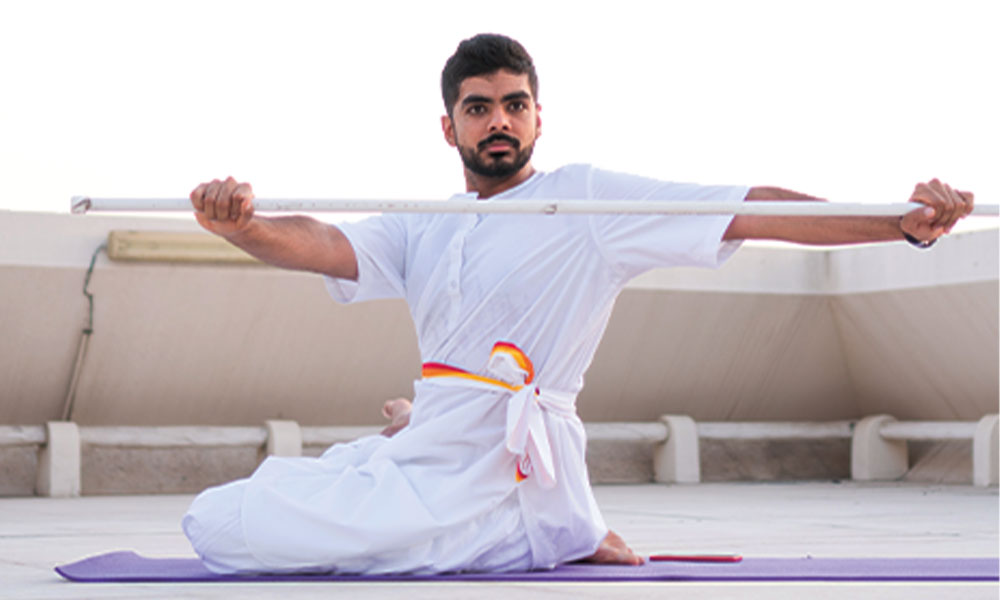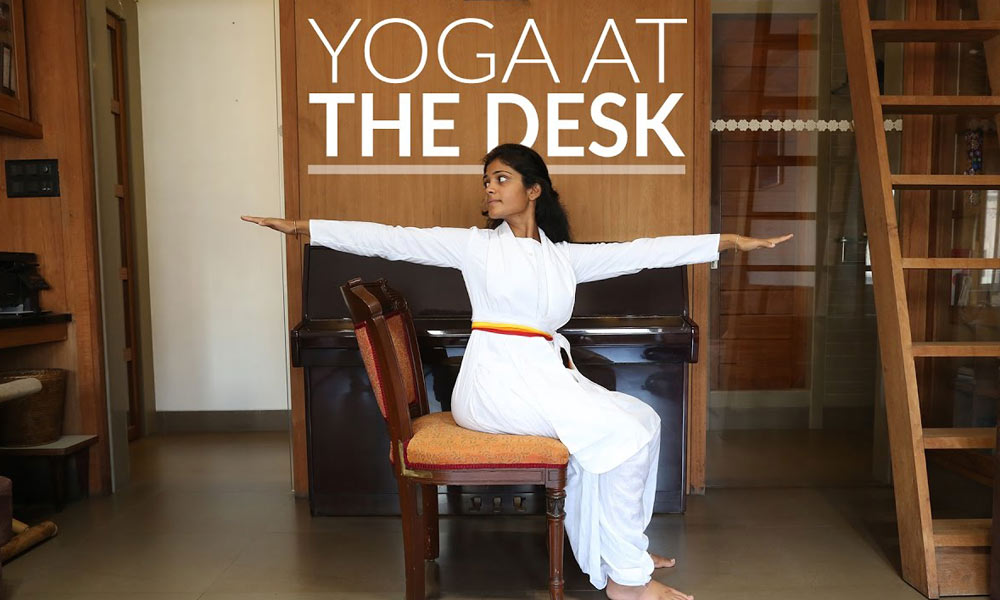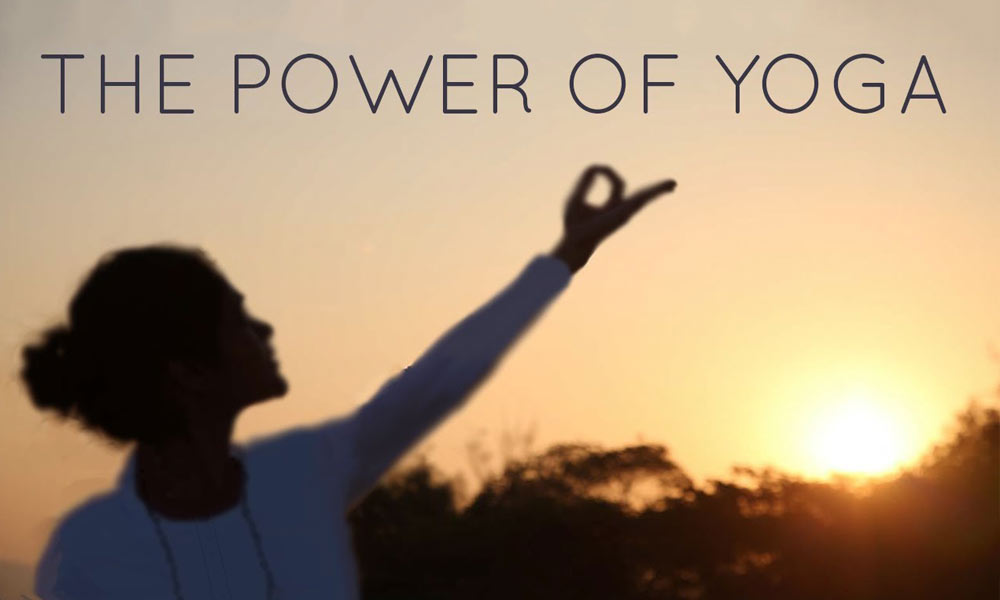Get Relief from Joint Pain: 6 Easy Ways
Lets learn how to keep the joints healthy.
Stretching and strength training are good for your muscles and cardiovascular exercise is good for your heart, but what about your joints? Joints, along with bones, muscles, tendons, ligaments and cartilage, form the musculoskeletal system that allows us to walk, run, jump and move in whatever way we want. To prevent joint pain, the joints need movement to keep them functioning properly. Unlike muscles, joints have no direct blood supply. If there’s no motion in the joint it will degenerate, leading to moderate to severe joint pain.
That is why we perform Sukshma Vyayma, or subtle exercise, as these gentle movements release synovial fluid which lubricates the joints, reducing friction between the bones and allowing for greater movement. So let’s get ready for an enjoyable practice.
Find our easy-to- follow video to Relieve Joint Pain here!
Let’s take base position
Prarambhik Sthiti:
Sit with the legs outstretched, feet close together but not touching
Place the palms of the hands on the floor to the sides, just behind the buttocks
Straighten the back, neck, head, elbows
Lean back slightly, taking the support of the arms
Head Rotations
Sit in cross-legged position with hands resting on the knees in jnana or chin mudra. Close the eyes.
- Slowly move the head downward, and try to touch the chin to the chest. Then to the right, backward, left, and again forward in a smooth, rhythmic circular movement.
- Inhale as the head moves up and exhale as the head moves down.
- Practice 10 times clockwise and 10 times anti-clockwise.
- Do not strain. If dizziness occurs, open the eyes and discontinue the practice. Be aware of the sensations in the head and neck.
All the nerves connecting the different organs and limbs of the body pass through the neck. Therefore, the muscles of the neck and shoulders accumulate tension, especially after working long hours at a desk. These asanas release tension, heaviness and stiffness in the head, neck, and shoulder region. But note that cervical spondylosis patients should strictly avoid forward bending of the next, and those suffering from vertigo, low or high blood pressure should avoid neck movements completely.
Shoulder Rotations
Remain in base position or cross-legged pose.
Place respective hands on shoulders in Tridosha Mudra.
- Rotate the elbows in a large circle 10 times clockwise and 10 times anti-clockwise.
- Inhale on the upward stroke and exhale on the downward stroke.
This is beneficial for cervical spondylitis and frozen shoulder.
Wrist Rotations
Extend the right arm forward at shoulder level and take a loose fist with the right hand, with the thumb inside.
- Slowly rotate the wrist, making as large a circle as possible.
- Practice 10 times clockwise and 10 times anti-clockwise, ensuring arms remain still.
- Repeat the same with the left fist.
This helps relieve tension caused by prolonged writing and typing. Also it is essential to strengthen the wrist joints for those bearing heavy weights or practicing arm balancing to avoid over-pressuring this region.
Hip Rotation
Sit in the same starting position but place the right foot on the left thigh.
- Use the right hand to rotate the right knee in a circle and make the circular movement as large as possible.
- Practice 10 rotations clockwise and 10 rotations anti-clockwise.
- Straighten the leg and repeat with left leg.
- Inhale on the upward movement and exhale on the downward movement.
Tight hips affect your comfort in sitting cross legged to simply being able to pick up something off the floor. When hips are tight, they increase the load and cause overuse of the spine. Yogic tradition holds the hips as a storage ground for negative feelings and pent-up emotions. Hip-opening can create an energy release.
Knee-bending
Start in dandasana
- Bend the right knee, bringing the thigh near the chest and clasp the hands under the right thigh. Straighten the right leg, pulling up the kneecap. Keep the hands under the thigh, but straighten the arms.
- Raise the leg off the floor to flex completely and bend the knee into the chest. Bend in and straighten out 10 times while keeping the head and spine straight.
- Then leading with pointed toes, make 10 circle rotations clockwise and 10 circles anti clockwise.
The knee joints bear most of the weight of the body and are more vulnerable to injuries and osteoarthritis. These movements rejuvenate the join by activating the healing energies.
Ankle Rotations
Sit in the base position and keep the heels on the ground throughout the practice.
- Slowly rotate the right foot clockwise from the ankle 10 times and repeat 10 times anti-clockwise
- Repeat the same procedure as above with the left foot
- Slowly rotate both feet in the same direction in synchronised fashion 10 times followed by the other direction. Try to keep the rest of the body still except the feet
This helps in returning stagnant lymph and venous blood in the feet, especially helpful for those bedridden, preventing joint pain.
We hope you enjoy this session to relieve joint pain and remember, no matter one’s ability, the body can not handle vigorous practice without warming up.
Joint movements are excellent for alleviating reheumatism, arthritis, high blood pressure, and heart problems. It can also restore lost range of motion, providing a solid foundation to your athletic performance (strength and power) and protecting you from common joint pain, aches and injuries. So let’s keep moving, and flowing safely. Namaste!
Find more at our Blog.
Related posts
Comments are closed.




